This boudoir card photograph came to me from Maine. The boudoir card format appeared in the mid-1880s as a slightly larger and more expensive alternative to cabinet cards. The larger size was particularly suitable for group portraits.* This one was taken in the town of Pirmasens, Germany, near the border with France. The studio belonged to a photographer named Fritz Walloth. Other examples of his work can be found online, but I have yet to find any information about him.

(*The photo itself is approximately 5.25 x 8 inches, or about 13 x 20 cm. The mount is half an inch longer. You can see a scan of the whole card here.)
The group in the photo isn’t identified. The website of the Municipal Hospital of Pirmasens, which opened in 1988, offers some history in English:
By 1890, the population of Pirmasens had climbed to 21,000 as a result of the rapid development of the shoe industry. A new and significantly larger hospital was built on Lemberger Straße – just a stone’s throw from the current hospital. The facility opened in 1894 and was expanded between 1914 and 1960. The structure survived both world wars almost unscathed. Since 1991, that building has been run by Caritas as a retirement and nursing home.
My guess would be that the photo was taken in connection with the opening of the new hospital in 1894. The opening would have been a major event for the town. Positions at the hospital might have required higher levels of training than at other facilities. Modern medical care would have been a source of pride for the town and for many of the doctors and nurses who provided it.
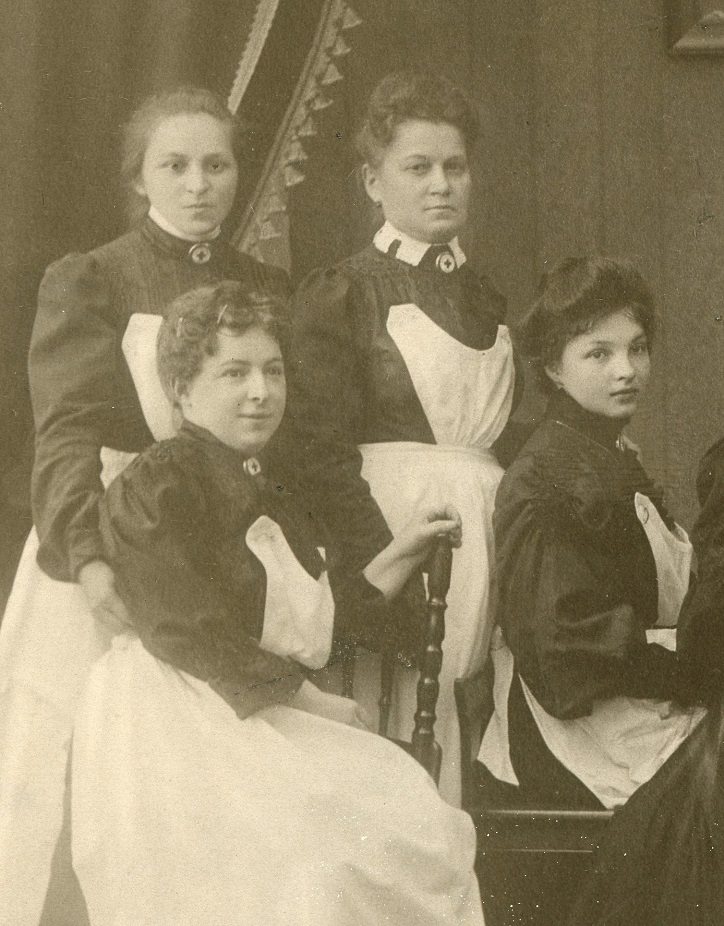
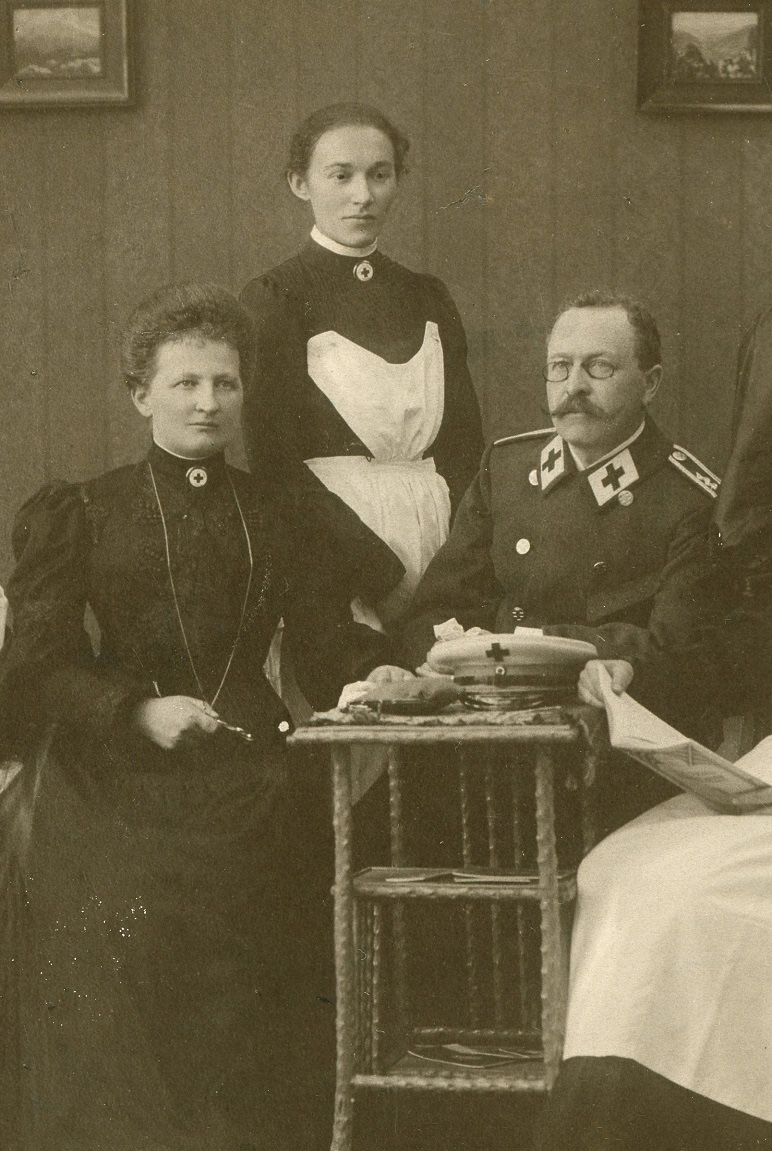
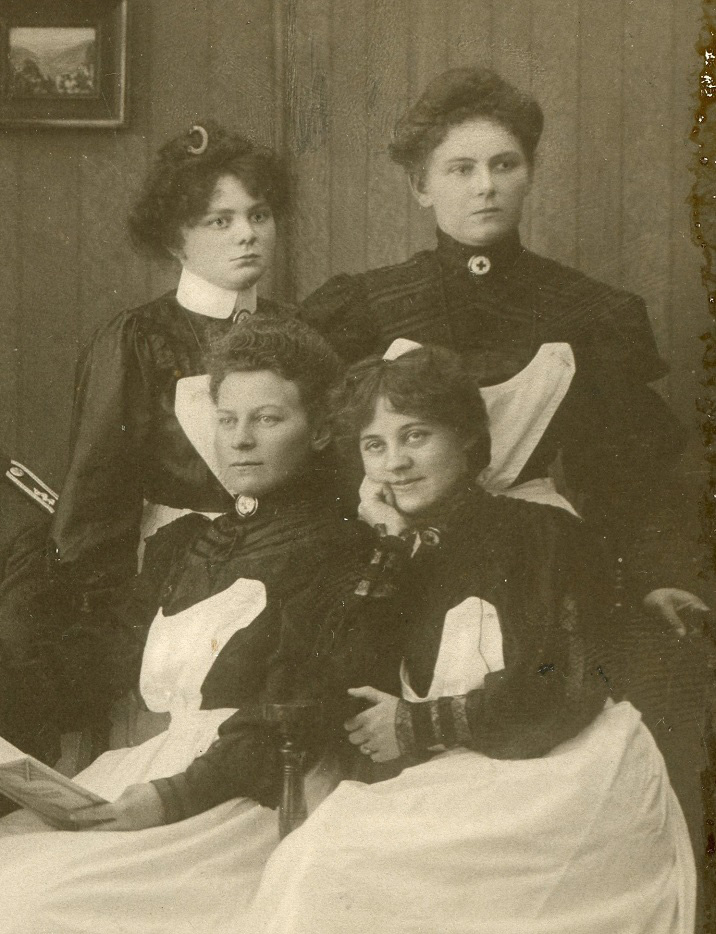
As 2020 comes to an end, medical professionals around the world continue to work heroically, often at great personal sacrifice. I sincerely hope the new year brings them some relief. I also hope the world will continue to honor their sacrifices and their professionalism after the crisis has passed.
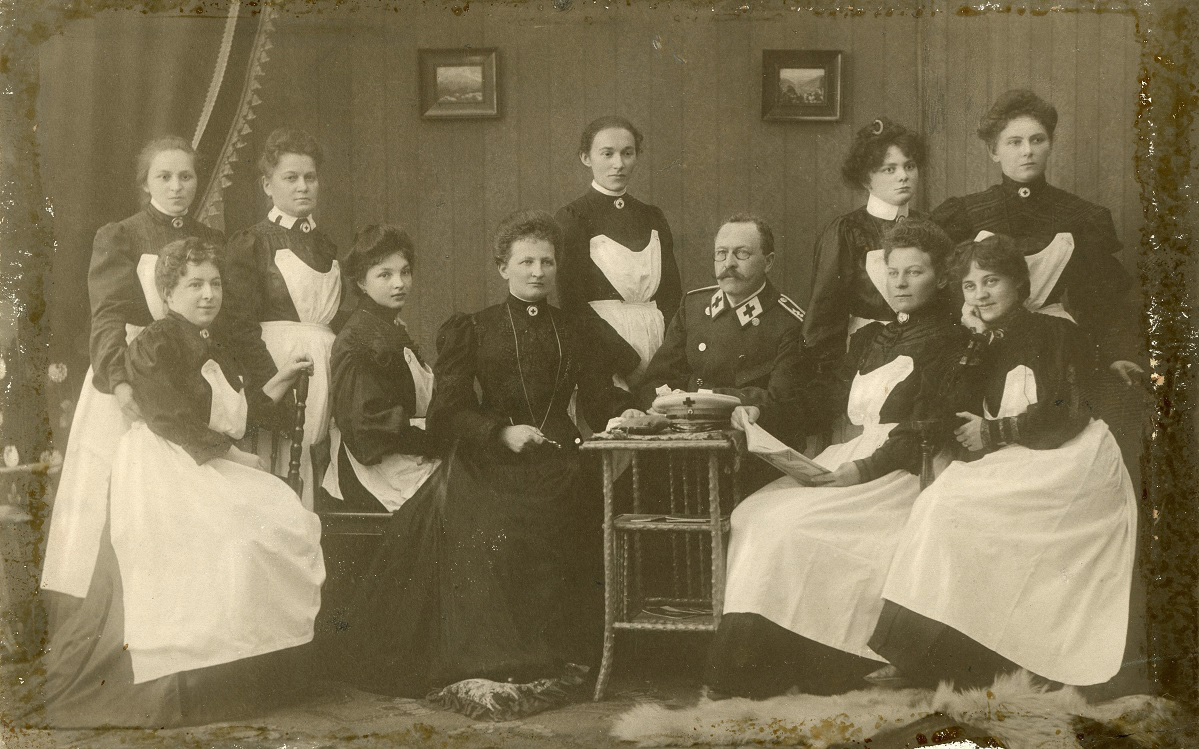
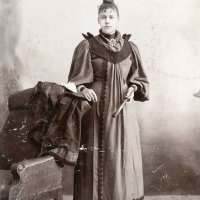
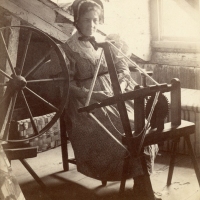
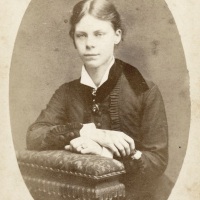
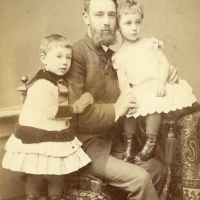
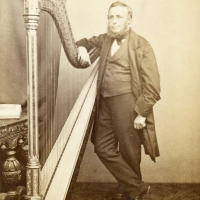
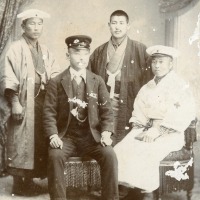
Another fascinating photo! They look determined and ready to serve. Interesting that the matron has her feet on a cushion and the two ladies on the right have a fur rug.
LikeLiked by 3 people
Not necessarily thrilled about the photo shoot, but determined. 😉 The purpose of the cushion may have been to help her hold her position. Have a great New Year, Morgaine!
LikeLiked by 1 person
Thank you so much, Brad! Wishing you a Happy, Healthy and Prosperous New Year! 🙂
LikeLiked by 1 person
I noticed that fur rug as well.
LikeLiked by 2 people
I don’t know why, but many photographers thought a studio had to have a fur rug!
LikeLiked by 2 people
Looks like 4 of the ladies have had the pupils of their eyes ‘doctored’, fascinating photograph!
LikeLiked by 1 person
That was pretty common, especially in earlier decades. It’s always a little creepy when enlarged!
LikeLiked by 2 people
I love the variety of facial expressions and focus! Comparable to a group Zoom this year 😁
LikeLiked by 3 people
Hahaha!! 😄
LikeLiked by 1 person
I agree with your wish to doctors and nurses. Happy Holidays to you!
LikeLiked by 1 person
Some hospitals here in America are full right now, which is very scary, but I’m optimistic about the future. Have a great New Year, Luisella!
LikeLiked by 1 person
Same situation is in Verona, my hometown in Italy. Let’s hope for the future and stay safe meanwhile. Thanks. All the best!
LikeLiked by 1 person
It’s a wonderful group portrait photo! Wouldn’t it be nice to be able to find out what happened to everyone in it? Some of my ancestors hailed from Winden, which is close to Pirmasens. Happy new year, Brad!
LikeLiked by 1 person
I have at least two lines of German ancestry, one in my mother’s family and one in my father’s, and I don’t know where either one originated. It’s frustrating, but new information could come to light anytime. Happy New Year to you, too, Shayne!
LikeLiked by 1 person
The woman standing to the right of the man is wearing a man’s shirt collar. I’ve not seen that before. Curious if it was common at all, or why it might be so in this situation.
LikeLiked by 1 person
I hadn’t really thought about the different collars. The man’s uniform made me wonder if the group might have been affiliated with a military hospital. But I don’t think it’s a military uniform. And if the women were wearing military-issue outfits, the outfits would all be exactly the same, without the different collars. So your observation about the collar is important. I wish I could offer more information!
LikeLike
Love the expression (bored?) of the seated woman on the far right! Another wonderful photo find.
My ancestors are from Germany; Wasserschwenden, then Hilsbach (Bavaria). My earliest American ancestor was born in Hilsbach in 1705, leaving for and arriving in American in 1732. The photographer’s surname is similar to my own. My ancestors in Germany were known as Walck, but in America as Wallick.
So I admit, the first thing that jumped out about this post, for me, was the photographer’s name!
LikeLiked by 1 person
You’ve got me wondering if Walck and Walloth could have been derived from the same name originally. Certainly the “Wal-” root could be the same.
One name in my father’s family tree is Dolloff, which may derive from the German “Dahlhoff,” but we don’t know for sure. The spelling “Dolloff” only exists in America. I bet that’s true of Wallick as well.
LikeLike
I wonder who the man might be. Did you try to track down any personnel info for the hospital around that time?
LikeLiked by 1 person
I assume he was a doctor. I’d love to find personnel info for the hospital! I considered writing to the city archive in Pirmasens, but with the holidays and Covid restrictions everywhere, I thought it might be better to wait.
LikeLiked by 1 person
All my respect to nurses and doctors now and forever.
Happy New Year!
LikeLiked by 1 person
Happy New Year, Susu!
LikeLiked by 1 person
Yes, they might be nurses. And bless medical workers for their work. What do you think is the guy on the photo?
LikeLiked by 1 person
I think he’s a doctor, but I don’t know for sure. Do I remember correctly that your sister’s a nurse? Her job must be so hard right now.
LikeLike
The girls are neat and beautiful. The boss looks a little strict. I’m trying to imagine if I could have been there.. 😆
Happy New Year, Brad! I wish you and your family good health and safety!
LikeLiked by 1 person
Yes, he does look strict. I don’t think he would have been fun to work with. But I can easily picture you there in a uniform. I’m sure you were a very good nurse. 🙂
All good wishes in the New Year to you and your family! I hope your mother can avoid people until the vaccine becomes available. Take care and stay well!
LikeLike
Thank you very much, Brad!
LikeLiked by 1 person
I noticed that the crosses on the man’s uniform also appear on the brooches worn by the women. My sense is that this might be a group akin to the Salvation Army or Red Cross; that would explain the insignia. What intrigued me most about the photo is the variety of expressions, and their remarkable liveliness. These people seem more confident and somehow casual than people in many of the photos you show. Personally, I have a feeling they all got along quite well, and that the fellow wasn’t at all severe or distant.
LikeLiked by 1 person
I hadn’t actually considered the Red Cross, ironically, but you could very well be right. This group could still have been affiliated with a hospital, but they could have been a special team that responded to crises in other places, a sort of emergency-response team.
I like your reading of the group’s dynamics. Both the man and the matron look all-business, but that’s not a bad thing. I bet they were good at what they did, and I imagine the women felt a certain camaraderie.
LikeLiked by 1 person
It’s interesting how the photographer had them all looking in different directions. Otherwise it might have been disturbing to see them all focused in unison. To see them as individual with the united purpose of healing is more comforting and memorable. Just from their unique expressions, I can pick the ones I’d prefer to care for me 😉 Some look stern and cold. Some look bewildered. Some look kind and gentle. The imagination runs wild!
LikeLiked by 2 people
I’m surprised the two women at far right in the back are looking to their left (our right), rather than the opposite way, which would have created more symmetry.
As with your haiku, our imaginations try to fill in the blanks, don’t they? The desire to understand what we see or hear is very strong. It can lead us to insightful analysis, or it can lead us down the wrong track entirely.
LikeLiked by 1 person
This is the kind of photo that makes you want to write a story about these people. This would have been the perfect “writing prompt” to use when I was mentoring middle-school writers.
LikeLiked by 1 person
I bet you have a great imagination, Ruth! 😉
LikeLiked by 1 person